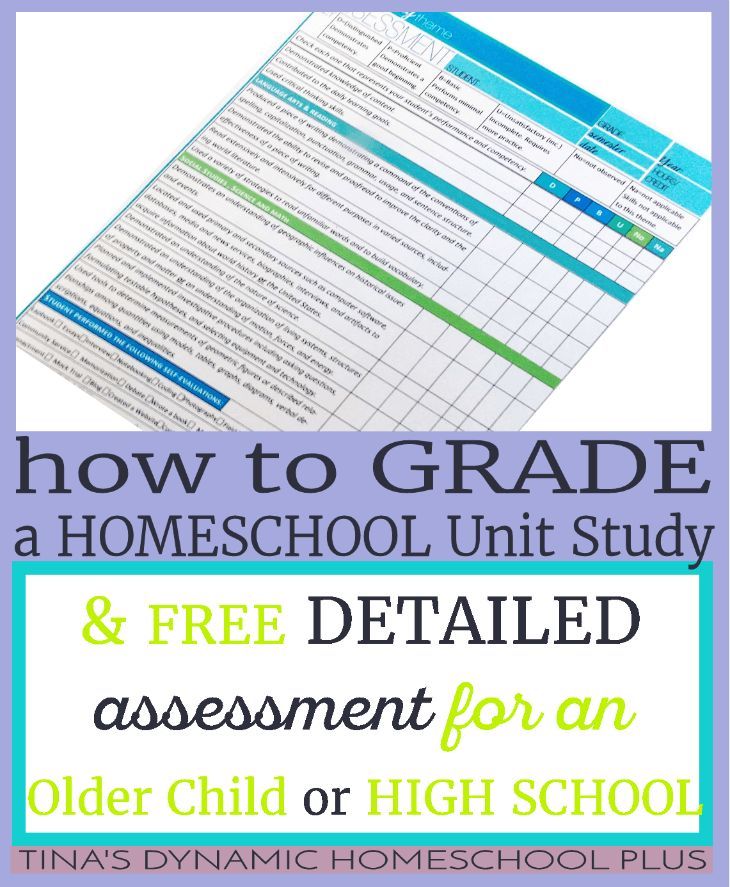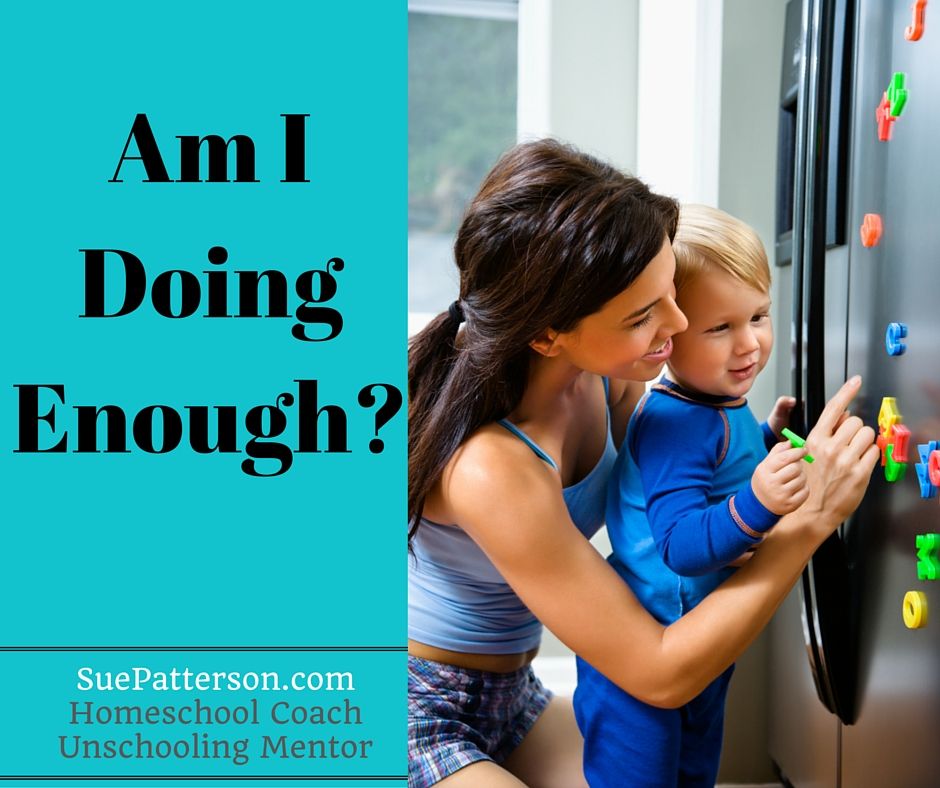How to homeschool your middle school child
10 Tips for Homeschooling Middle School
There is a significant difference between homeschooling elementary-age and homeschooling middle-school-age students. Middle school is a time for kids to learn how to become more responsible for their education and to become actively involved in the whole learning process. This includes learning how to manage their time and becoming more responsible for what they are learning. It is also very important to allow time for interest-led learning during their schedule. This age is an exciting time of change along with increasing maturity. As homeschool parents, we have the privilege and responsibility to help our kids learn how to take on these new developmental challenges.
Practice for High SchoolNow is the perfect time to help kids start transitioning to high school with expectations of maturity, independence, and in the all-around quality of their work. It is also the time for you to expect more detail in their written work, science labs, and in the research they do. It is important while homeschooling middle school that while helping them become more independent that they are still held accountable for the tasks they need to accomplish.
Of course, there are certain classes that are necessary to take but now would be a great time for them to give input on some possible electives that they are interested in. Also, give them some say in the type of curriculum they would like to use. By now they are most likely aware of how they learn best.
Explore Their Passions
This kind of goes along with choosing their own classes but it can be expanded on when starting homeschool in middle school. Does your child have an interest in sports? Sports are becoming more and more available to homeschoolers whether it is a city or public league or even a homeschool team. What about art or music? If they express an interest in one of these while starting homeschool in middle school maybe they can try it out with lessons to see if it is something that interests them enough to pursue.
Use a Homeschool Planner
First thing is first, take a look at our FREE Teen Homeschool Planner for homeschooling middle school. Make this fun! If they are the artsy type then go to an office supply store or art store and let them pick out colored pencils, pens, or markers to make the planner their own. Let them figure out what they would enjoy using to keep on top of their schedule and lessons. It can be as simple or elaborate as they choose to make it.
Don’t Stop Reading Aloud
Do you think your middle school student is too old to be read to? Think again. Many memories can be made through reading chapter books with more complex characters and storylines. Our homeschool options for middle school resource list is a book list for middle school kids-Wholesome Book List for Middle School
Learn to be Accountable and Responsible
When homeschooling for middle school students you can begin to let your child make more choices which may at times lead to mistakes. Keeping them accountable for their actions and making them responsible for the outcome can add to the experience of homeschooling. Guiding them through it with love and patience can make a huge impact on future responsibilities.
Keeping them accountable for their actions and making them responsible for the outcome can add to the experience of homeschooling. Guiding them through it with love and patience can make a huge impact on future responsibilities.
Keep in Mind Their Changing Bodies and Minds
Don’t forget they are still kids about to step forward physically and emotionally towards becoming adults. Now is the time to come alongside them to advise them on dealing with stress, hormones, and deadlines.
Age Appropriate Life Skills
Most likely life skills have been a part of your homeschool but now is the time to expand and find what skills they will need for eventual adulthood. Take a look below in the resource section to find ideas to include life skills in your homeschool day.
Keep Planning Homeschool Field Trips
Now would be a great time to take learning on the road with some roadschooling! Explore your state or neighboring states for a learning adventure. Even if you are unable to venture far, look around at the possibilities that abound around your community. Middle school-age students may enjoy visiting a veterinarian’s office, a farm, or even a factory!
Middle school-age students may enjoy visiting a veterinarian’s office, a farm, or even a factory!
Don’t Forget To Have Fun!
With each stage of parenthood, the days can sometimes be long but the years are fleeting. Take the time now to enjoy this stage in your child’s life. As a homeschooling parent, you have the advantage of being the main role model for your child. Show them that there is much fun to be had while learning.
Resources for Homeschooling Middle School
- 5 Principles of Teaching Middle School Math– Homeschooling math can be quite a challenge, but using these effective strategies can make a difference!
- Fun Homeschool Middle School Science– Wondering how to go about homeschooling junior high science? It’s not as difficult as you might think when using science experiments!
- Homeschooling and Loving the Middle School Years– New to homeschooling the middle school years? Join Kim as she shares her experiences and how she enjoyed those tricky homeschool years!
- Podcast- Why Middle School is So Important– Your homeschool middle schooler is changing and growing every day, discover why this time is so important! Listen now!
- Middle School Curriculum Finder– Find the best homeschool options for middle school for curriculum for your student with these helpful steps.

5 Tips for Homeschooling Middle School
This post is sponsored by AOP.
Whether you just began your homeschool journey or have been homeschooling your child since birth, reaching the middle school years can seem a daunting task. The change in the amount of schoolwork coupled with the metamorphosis they are going through as they begin to mature into teenagers appears to be a challenging mission to undertake.
It doesn’t have to be.
Middle school can be one of the best times to spend with your child learning together. This is the transition period in their life when they are maturing from a young child to the beginnings of a young adult, who, in a few years, will be creating high school transcripts and choosing their career paths.
As a parent who is teaching their second child through middle school and just started teaching a high schooler (who was homeschooled all the way through middle school), I want to encourage you along your homeschooling journey as you begin the task of homeschooling a middle school student. Here are my top 5 tips.
Here are my top 5 tips.
Involve Your Middle Schooler in Planning Your School Year
While no one knows your child as you do, your child also knows more about themselves. For our family, we are early risers. We can be out the door barely before sunrise to hike to a waterfall and be back by lunch. When we began scheduling our school year, I asked my middle schooler if she preferred to start school early in the morning or sleep in and finish school after dinner. I also give our kids the freedom to plan their projects around their schedules. If they want to schedule a nap on the day they are doing a late-night small group, I do not assign a book report to be due that day. While we know our kids cannot choose to skip taking math, they can help you schedule areas of their planning.
Have a Daily Routine
Let’s be honest, when most of us hear the word “routine,” we think of a rigorous schedule with deadlines to meet every single day. For example:
- 9:00 AM: Math
- 10:00 AM: History
While that may work for some families, we found that this type of schedule did not work with our three students in three different grades with three different personalities. This is why we choose Daily Routines over schedules. What we found works best for our family is to set guidelines for what timeframe all schoolwork is to be completed. On some days, that may mean starting school at 7 am and finishing by 2 pm. Other days, when we have grocery shopping (more on that in a minute), field trips, or PE outside the home, we may start school at 11 am, finish by 4 pm, and take time over the weekend to finish any projects that require more one-on-one time. This is one of the reasons why our family switched to using Alpha Omega Publications (AOP) Monarch online curriculum (see our one-year review of AOP Monarch). We select which days we do school, utilizing the free planner and calendar included with the curriculum. We can choose which times we start and finish our classes. AOP Monarch also grades up to 85% of the work, allowing me to have more time for one-on-one work with each child, and giving us the freedom to choose our own routine that works best for our whole family.
This is why we choose Daily Routines over schedules. What we found works best for our family is to set guidelines for what timeframe all schoolwork is to be completed. On some days, that may mean starting school at 7 am and finishing by 2 pm. Other days, when we have grocery shopping (more on that in a minute), field trips, or PE outside the home, we may start school at 11 am, finish by 4 pm, and take time over the weekend to finish any projects that require more one-on-one time. This is one of the reasons why our family switched to using Alpha Omega Publications (AOP) Monarch online curriculum (see our one-year review of AOP Monarch). We select which days we do school, utilizing the free planner and calendar included with the curriculum. We can choose which times we start and finish our classes. AOP Monarch also grades up to 85% of the work, allowing me to have more time for one-on-one work with each child, and giving us the freedom to choose our own routine that works best for our whole family. Find a routine that works best for you and your child and stick to it.
Find a routine that works best for you and your child and stick to it.
Find Creative Ways To Incorporate School In Everyday Life
As we share in our recent video, “The Story of Our Adventure,” our family sees everyday life as a chance to learn and grow together. When I go grocery shopping, all three of my kids go with me. We talk about meal plans, balancing food groups, and budgets. While we are hiking, we discuss plants, animals, biomes, physical fitness, and practice courtesy towards others we share the trails with.
Here is one example of an everyday learning moment we recently shared:
My 5th grader was discussing how she was learning about compasses. She asked if we had a compass in our travel gear. Her dad showed her that our phones have compasses that work without WiFi or Location turned on, showing her that we always had a compass even when we have no connection. This brought up the subject with all my children, including my middle schooler who has astronomy this year, which direction the sun rises, sets, and how to find your location based on specific stars that appear at specific times of the year. It was only a 10-minute conversation, but it was a conversation that sparked interest in the study of astronomy.
It was only a 10-minute conversation, but it was a conversation that sparked interest in the study of astronomy.
Set Goals and Rewards
This can be super simple. If my middle schooler finishes school on time each day, she is allowed to have free time at the end of the day. Work with your middle schooler and see what goals they’d like to set each day and what rewards they can achieve if they meet that goal.
Let Your Child Know You Care
Like we said before, this is a time of metamorphosis for your child. Even though we don’t like to think about it, middle school is when they are growing up. Oftentimes, we find that even though our kids know we love them and are always here for them, we need to remind them that we are always available to help them through this time in their lives. Sometimes it’s as easy as, “I saw you made a lower grade on math today than you normally do. Let’s talk about this and see what we can work on together. I am here for you.”
Take the challenge of homeschooling a middle school student, and grow together in this special time in their lives.
If you’re interested in learning more, you can discover the Monarch homeschool curriculum here.
More About the Author:
Alicia is a ten-year homeschooling mom of three children. She shares on her YouTube channel, This Homeschooling Adventure, how she and her husband have a passion for teaching their children about everyday life adventures. Whether it be learning at home or on one of their many journeys as they travel the world, their objective is to learn and grow together as a family. She shares daily homeschooling tips and how her family utilizes AOP Monarch to allow their family to learn from wherever they are, from one adventure to another.
Additional Homeschool Resources
10 Best Practices for Homeschooling Middle School
Homeschooling and Loving the Middle School Years
Homeschooling Middle School
#HELP WITH HOMESCHOOLING, #HOMESCHOOL TIPS, #MIDDLE SCHOOL HOMESCHOOLING, #SPONSORED CONTENT
Latest Posts
NOVEMBER 3, 2022Evaluating Your Charlotte Mason Homeschooling
When I started with Charlotte Mason (CM) homeschooling, I have to admit, I was a bit overwhelmed. Twenty years later, I wish I knew then what I know now. Whether you are a veteran or a novice…
Twenty years later, I wish I knew then what I know now. Whether you are a veteran or a novice…
Read more >
NOVEMBER 2, 2022Calling the Websters: Reclaiming the Dictionary
Guest post by Gabriel Morse. I am realizing the sad truth that when I speak to children and young people these days, we are not speaking the same language at all. The words sound the same,…
Read more >
NOVEMBER 1, 20225 Tips to Help Parents Afford Homeschooling
Guest post by Heidi Rosenberg Education is the best legacy that parents can pass on to their children. However, the value of this legacy depends on the kind of education parents can afford…
Read more >
All about the laws of homeschooling in Russia
A few years ago, teaching a child at home was possible only if he had a confirmed disability. Now parents can transfer their children to home schooling simply at will. The acquisition of knowledge outside the walls of educational institutions is regulated by the law of the Russian Federation No. 273-FZ. A homeschooled child has the right to take exams after grades 9 and 11. This allows him, like all other children, to enter secondary special and higher educational institutions on an equal footing.
Now parents can transfer their children to home schooling simply at will. The acquisition of knowledge outside the walls of educational institutions is regulated by the law of the Russian Federation No. 273-FZ. A homeschooled child has the right to take exams after grades 9 and 11. This allows him, like all other children, to enter secondary special and higher educational institutions on an equal footing.
Law on Home Education
All rights of students, obligations of parents and educational institutions are described in federal law N 273-FZ, which entered into force on 12/29/2012. When transferring to self-study, you need to know several articles of the law, these are:
- Article 17. It describes the forms of education. According to this article, knowledge can be obtained in the form of self-education or family education. Combined acquisition of knowledge is allowed, that is, some subjects can be taken at school, while others can be mastered at home. The student's knowledge is assessed in an educational institution by conducting intermediate and final attestations;
- Article 44.
 Regulates the rights of parents to take responsibility for the education of their children. After receiving a document on secondary education, the student can already choose the form of education;
Regulates the rights of parents to take responsibility for the education of their children. After receiving a document on secondary education, the student can already choose the form of education; - Article 63. Describes the features of obtaining general education.
The Education Act does not set age limits for home schooling. However, parents, if they wish to transfer their child to an alternative option for mastering the school curriculum, need to carefully study this law of the Russian Federation. This will help to understand what they are obliged to give to their child and what assistance the state can provide.
Home education options
Out-of-school education can be chosen based on the child's health, family background and religious beliefs.
Three forms of home education are recognized in Russia:
- home education;
- family;
- remote.
Each of the options has its own characteristics. Choosing from them, parents should be guided by the interests of the child and his capabilities. It must be remembered that learning at home has not only a number of advantages. He also has certain shortcomings that can adversely affect the student's future life.
Choosing from them, parents should be guided by the interests of the child and his capabilities. It must be remembered that learning at home has not only a number of advantages. He also has certain shortcomings that can adversely affect the student's future life.
The first week of classes is free!
Start studying, and at the end of the trial period, pay for the chosen format!
Features of the home-based option (in case of health problems)
The law on education of the Russian Federation provides for home-based education for those who have a disability. Home education allows you to get a certificate of secondary or general education. Students with disabilities can study either according to the general school curriculum or according to individual plans drawn up taking into account their abilities. Lessons at home can be shortened to 20-25 minutes or extended to 2 hours. Upon completion of the school curriculum, a certificate of basic or secondary general education is issued. You can read more about organizing homeschooling for children in a letter from the MINISTRY OF EDUCATION OF THE RUSSIAN FEDERATION
You can read more about organizing homeschooling for children in a letter from the MINISTRY OF EDUCATION OF THE RUSSIAN FEDERATION
Steps for registering a child for home schooling
Transferring a child to home schooling is actually not that difficult. However, the process will be simplified if parents know in advance which institutions to contact.
To transfer a child to home schooling, you must do the following:
- Obtain a medical certificate from the local pediatrician stating that the child needs home schooling for health reasons. The pediatrician only issues such a certificate, and the decision is made by the ITU Commission.
- Write an application to the director of the educational institution where the child is studying. If the decision on home education is made before entering the first grade, then the application is written to the head of the city's Department of Education.
- If it is necessary to draw up an individual program, parents or legal representatives, together with the head teacher or school director, select an individual curriculum.
 It indicates the subjects necessary for the study and their number per week.
It indicates the subjects necessary for the study and their number per week. - On the basis of a medical certificate and an application, an order is drawn up. It indicates the teachers who will teach the child at home, and the frequency of knowledge testing throughout the year.
- Parents receive a magazine. In it, teachers should note the materials covered and the number of hours allocated, as well as the student's progress. At the end of the academic year, the journal is handed over to an educational institution.
The list of pathologies that give the right to home education, approved by the Ministry of Health of the Russian Federation. Education of children at home should be carried out by the school closest to the place of residence of the family.
An educational institution is obliged:
- to provide schoolchildren with free textbooks and reference books. We are talking about the literature that is in the school library;
- to provide consulting assistance, helping to learn general education subjects;
- conduct attestations - intermediate and final;
- after the final certification, issue a document on obtaining the appropriate education.

Parents have the right to invite teachers from other schools who can also take part in testing the student's knowledge.
Peculiarities of family education
Not only disabled students can study at home. The Law on Education provides for the opportunity to acquire knowledge independently even if there are no serious health problems. Then there is the issue of family education. Parents can teach the child themselves or invite tutors or teachers, the student comes to school only for intermediate and final certification.
Children are transferred to home self-education for several reasons, the main ones are as follows:
- Frequent absences from school due to professional sports, music. Very often, enthusiastic children, due to classes in sports schools, sections, because of competitions and competitions, cannot go to a regular school every day. Home schooling allows them to acquire the necessary knowledge base and receive the appropriate certificate of completion of the 9th or 11th grade.

- High level of mental abilities. General school programs are designed for children with average knowledge, so peers who are ahead of their classmates in development are not interested in regular lessons. This negatively affects the learning process;
- The nature of the work of the parents, which involves constant travel. Frequent transfers from one school to another have a negative impact not only on academic performance, but also on the mental health of students. Self-education helps to avoid this;
- Religious or ideological reasons that prevent children from being sent to school.
Transferring a healthy child to home schooling, you must first take into account his desire. Many children endure separation from the team very painfully.
First grade enrollment
Each parent can officially enroll their child in first grade every year. In recent years, there have been innovations that sometimes baffle parents. It happens that the school refuses.
It happens that the school refuses.
Homeschooling Steps
Homeschooling requires the following:
- Submit an application form to the Department of Education. The Department of Education provides parents with a list of schools where the child can attach for the final exams;
- The school must issue an order for the transfer of the child to the family form of education;
- Parents need to conclude an agreement with an educational institution. This agreement reflects all the duties and rights of both the parents themselves and the student, as well as the school. The document indicates the number of intermediate certifications and their timing, the need to attend practical and laboratory lessons.
School teachers are not required to come to your home when teaching at home. Parents either provide knowledge themselves, or invite tutors, or look for alternative options. The terms of the final and intermediate exams for a student at home may coincide with the certification of classmates. However, many people find it more convenient to choose an individual plan for assessing knowledge.
However, many people find it more convenient to choose an individual plan for assessing knowledge.
For homeschooling in Russia, the law provides:
- the possibility of transferring a child both from school to homeschooling and back in any class;
- providing the student with textbooks, advisory assistance to teachers.
The Law on Education states that parents, at the discretion of the constituent entities of the Russian Federation where the family lives, can receive the money that the state spends on the education of each student as compensation. Specific figures may vary, and in some areas such subsidies are not provided at all, so the amount of money must be specified at the place of residence.
Subscribe to our newsletter
By clicking on the button, you consent to the processing of your personal data.
You have successfully subscribed to our newsletter
You will soon receive a subscription confirmation email
Distance education
Getting school knowledge through the Internet is suitable for those children who can independently control the learning process. Contact with teachers occurs through telecommunication systems or face-to-face. There is practically no unified plan for remote acquisition of knowledge, technical means and special methodological literature. But private institutions are gradually emerging that are ready to work with schoolchildren remotely.
Contact with teachers occurs through telecommunication systems or face-to-face. There is practically no unified plan for remote acquisition of knowledge, technical means and special methodological literature. But private institutions are gradually emerging that are ready to work with schoolchildren remotely.
Advantages and disadvantages of home schooling
Teaching a child outside the walls of a traditional school has its pros and cons.
Key benefits of studying at home:
- More comfortable organization of the process: the ability to study at any convenient time and from anywhere, according to your own schedule.
- The ability to obtain knowledge from a variety of sources: textbooks, electronic literature, encyclopedias, video tutorials.
- The opportunity to teach the child in subjects of interest to the extent that he needs.
- More free time for hobbies: music, sports, scientific circles, learning foreign languages, etc.
- Higher efficiency of mastering the topic: classmates do not distract, time is not wasted on solving disciplinary issues.

- Lack of stress from being in a children's team. Not all children, by their nature, adapt well in schools, which negatively affects mental health and general well-being.
With family and distance self-education, the family can travel at any time of the year, as there is no need to take into account the school schedule.
The most obvious disadvantages of learning at home include the lack of social adaptation, especially in the absence of any group activities, as well as the need for parental control.
Amendments to the law on education
Law FZ-No. 273 is not perfect, it is amended almost every year. The main reason for the adjustments being made is the discrepancy between the developments of the law and the real state of education in the Russian Federation.
There are no significant changes in the new amendments regarding secondary and general school education. The only thing that deserves attention is that the government has enshrined such forms of education as family, network, distance learning at the legislative level.
Q&A
Is it possible to go to external studies and complete two classes in one year?
What form of attestation is provided for when transferring to an external study?
What should I do if my child does not complete the external program in one year?
Can adults study externally at the Home School?
Home schooling in secondary school
The “kindergarten-school-institute” system that has been established for decades clearly does not guarantee a successful determination of one's place in life and successful self-realization. The classical educational system is not always effective, modern knowledge depreciates too quickly, and school programs have been developed for years and approved for a long time. In this regard, home schooling in high school is an excellent alternative, aimed at effectively transferring the necessary knowledge and skills.
Reasons for the transition
Every year, the factors that have a key influence on the choice of distance learning become more and more. In particular, these are:
In particular, these are:
- Living in the outback, where there is no fully staffed staff of teachers.
- Many citizens move to other countries, but plan to return to their homeland after a few years.
- Health problems preventing regular school attendance.
- Difficulties in communicating with peers. Not all children manage to find a common language with classmates, and this can negatively affect the formation of personality.
- Conflict of interest. At the age of 11-12, the child is already aware of what he likes and what he wants to do in life. If your child has a predisposition towards art, music, or a particular sport, then switching to distance learning at school will clearly help to maximize their potential.
The first week of classes is free!
Start studying, and at the end of the trial period, pay for the chosen format!
Advantages and disadvantages
Middle school home education has both positive and negative sides. The advantages of such an educational form are considered to be the following factors:
The advantages of such an educational form are considered to be the following factors:
- Individual approach. Everyone learns the material differently: one needs to read the conditions of the problem three times in order to understand it, while the other just needs to figure everything out in his mind. Flexibility and convenience are the main qualitative characteristics of homeschooling.
- High efficiency. Text presentations, video tutorials, exciting tests and a chat with a teacher - all this allows not only to correctly convey the main idea to the student, but also to captivate him.
- Sharpening useful professional skills. With independent study of the material, the child will develop the ability to take responsibility for the result. He will learn to filter incoming information, navigate the information flow, understand what time management is and how best to distribute tasks.
- Freedom of choice. By self-studying at home, you can set your own schedule based on personal preferences, as well as work at your own pace.

There are also disadvantages to home schooling - in particular, these are:
- Lack of personal communication with the teacher. Not all children can do their homework on their own and clearly follow the instructions of the teacher. If parents do not properly control their child, especially at first, then it is worth thinking several times about switching to distance learning.
- Insufficient socialization. For the correct formation of personality, the social component is very important. The child should regularly communicate with peers, strangers adults. All this should happen live, and not through the screen of a mobile phone or computer. This gap can be successfully closed by hobby groups and classes.
- Freedom of choice. This factor can also be attributed to the minuses. Not everyone can focus when needed. Especially when a new message has arrived on a social network or an update to your favorite game has been released.
Subscribe to our newsletter
By clicking on the button, you consent to the processing of your personal data.
You have successfully subscribed to our newsletter
You will soon receive a subscription confirmation email
Curriculum
Grade 5
After the transition to secondary school, the burden on the child increases significantly. If in elementary school the program contained 5 subjects, then in grade 5 their number is already 11. During this period, the child needs outside help to fully adapt to the new program, and homeschooling is great for this.
Grade 6
At this stage, learning takes place in a deeper understanding of the information received, the skills of systematizing the information received are honed. The number of disciplines remains at the same level (the only thing, natural science is replaced by the history of Russia).
Grade 7
Subjects become more complicated, the amount of homework increases. The mastered program of the 7th grade is the basis, which will subsequently be used for successful studies in high school. This year mathematics is divided into two disciplines: algebra and geometry. Despite the fact that there is nothing complicated there, many children in a regular school begin to have problems with understanding. As a rule, this is caused by a lack of time in the class to “chew” information for each individually.
This year mathematics is divided into two disciplines: algebra and geometry. Despite the fact that there is nothing complicated there, many children in a regular school begin to have problems with understanding. As a rule, this is caused by a lack of time in the class to “chew” information for each individually.
Grade 8
Learning becomes more interesting, but more difficult. Physics and chemistry are added to the already existing 12 subjects. Disciplines cannot be called complex, but for their effective perception, many living examples, experiments and explanations “on the fingers” are needed. Presentations and video tutorials are great for this. Misrepresentation of one topic can cause a "snowball" and lead to a misunderstanding of the discipline as a whole.
Grade 9
This academic year is one of the main ones in the process of school education. Systematization of previously acquired knowledge and in-depth study of certain subjects allow you to get decent grades in the certificate.












